Generative Engine Optimization: Your Ultimate Guide to Growing Revenues
Is your content invisible to AI? Today’s digital landscape has shifted dramatically—AI-driven search engines like ChatGPT and Google SGE are replacing traditional search engines, and most companies are completely unprepared. Welcome to the world of Generative Engine Optimization (GEO)—the critical missing piece in your digital marketing strategy.
Key Takeaways
- Generative Engine Optimization (GEO) focuses on making your content visible to AI-driven search engines—fundamentally different from traditional SEO’s focus on rankings. Companies ignoring GEO will become increasingly invisible online as AI becomes the primary gateway to information. My clients have seen visibility boosts of 30-115% by implementing these strategies. Effective engine optimization demands structured content, strategic keyword research, and technical optimization—all working together to improve your visibility in the AI age and drive organic search traffic.
What is Generative Engine Optimization (GEO)?
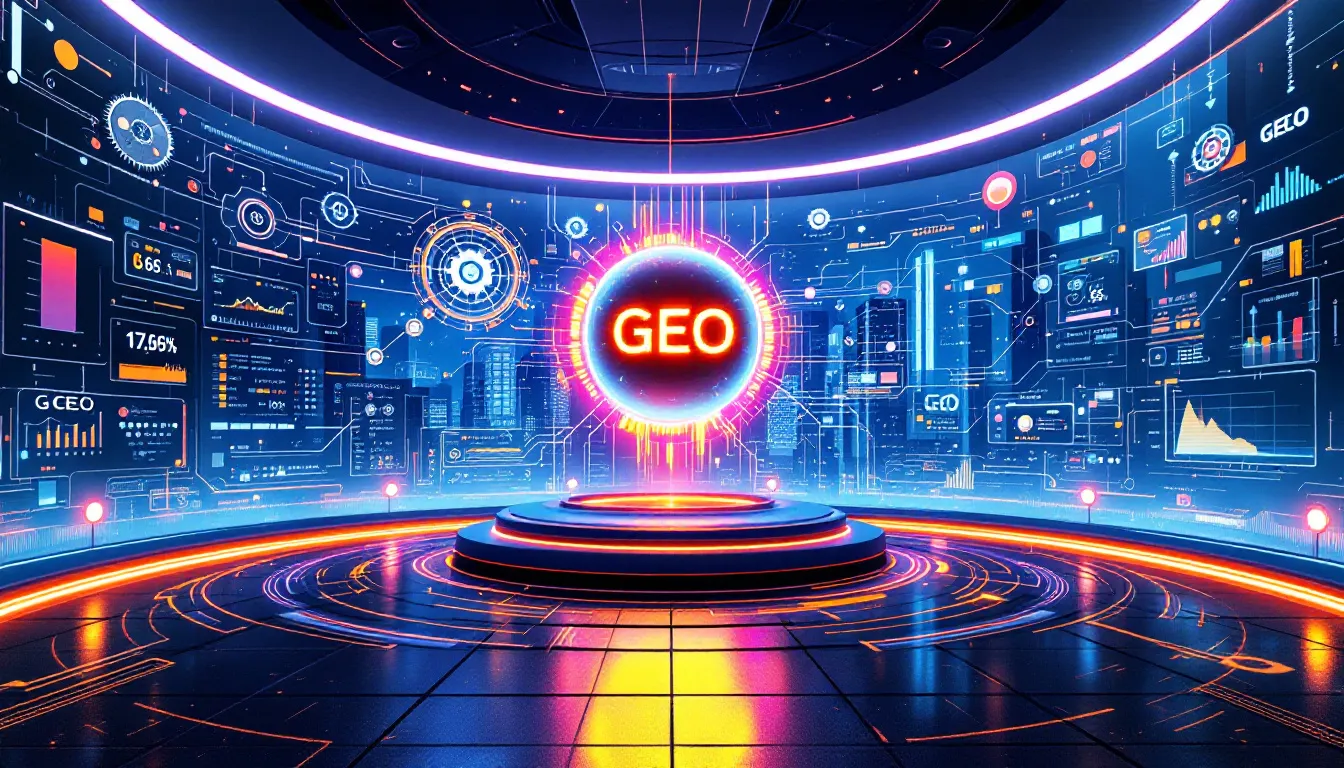
Generative Engine Optimization represents a fundamental shift in how businesses must approach online visibility. Unlike traditional search engines which focus on rankings, GEO targets how AI systems summarize and present information to users through AI-generated responses.
This shift matters because platforms like ChatGPT, Perplexity, and Google’s Search Generative Experience are rapidly becoming the primary channels people use to find information. Throughout my career building technologies adopted by Facebook, Apple, and others, I’ve seen firsthand how quickly these transitions can leave unprepared companies behind.
By understanding how these AI-powered search engines interpret content, you can secure your place in this new ecosystem—before your competitors do. After the initial excitement surrounding AI search, we’re now entering a phase where strategic optimization determines who wins and who disappears.
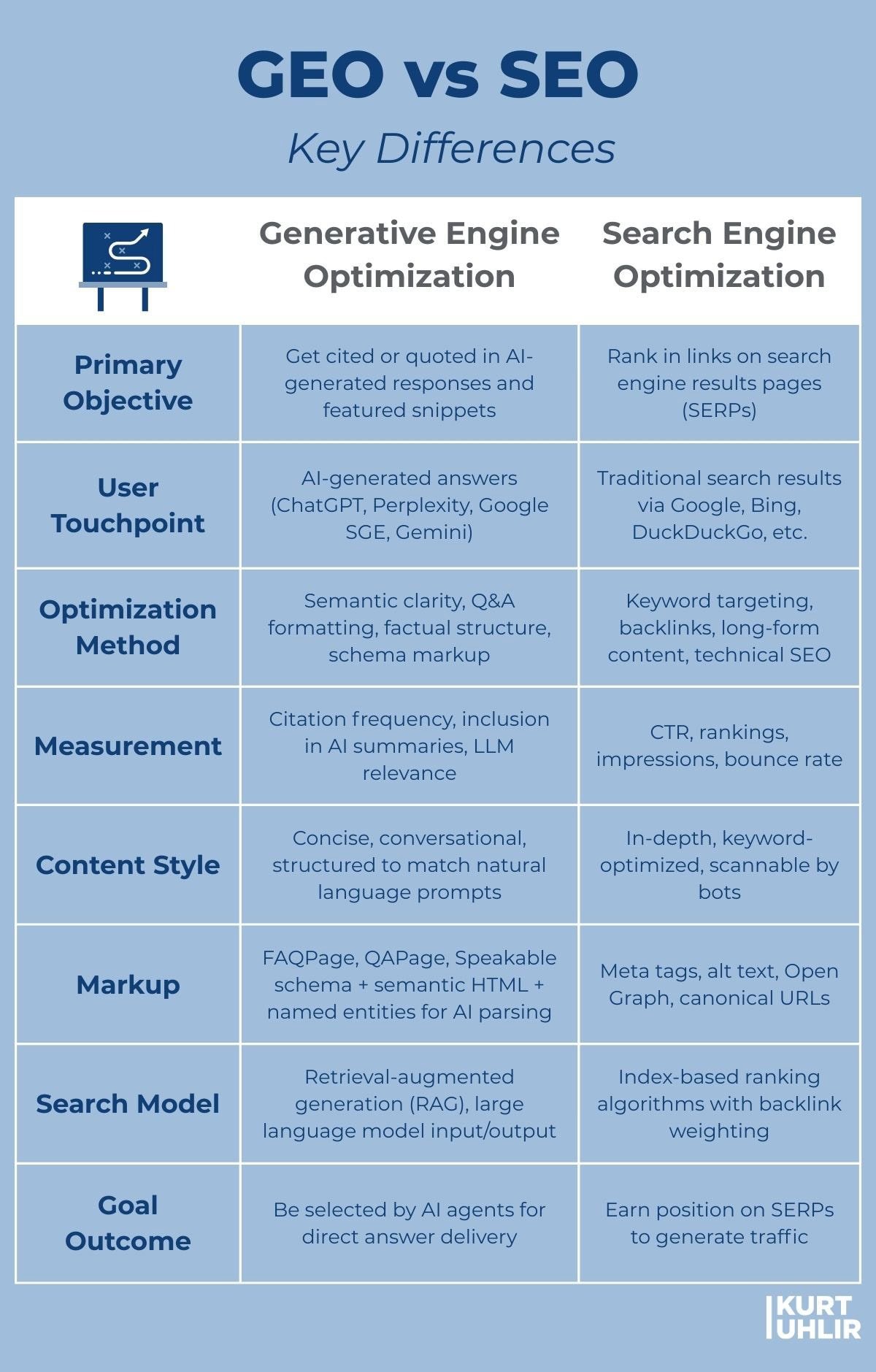
Key Differences Between GEO and Traditional SEO
Generative Engine Optimization GEO and search engine optimization serve completely different purposes:
- GEO: Influences AI-generated responses and summaries
- Traditional SEO: Aims for ranked positions in traditional search engine formats
While traditional SEO practices obsess over keyword density and link structures, GEO optimizes content through semantic clarity, brevity, and trust signals. I’ve seen this distinction play out repeatedly when optimizing for AI-driven search responses.
The metrics have changed too. Instead of measuring click-through rates and rankings, GEO efforts track citation frequency and inclusion in large language models. This requires a fundamental shift in how we create content—emphasizing natural, conversational phrasing and structured factual presentation that AI algorithms can easily parse.
Metadata and backlinks, crucial for both SEO approaches, play different roles in GEO—where citation-worthiness and formatting significantly influence AI visibility.
Why GEO Matters in an AI-Driven World
Large language models have become the default information gateway for millions of users. The stats don’t lie—brands not optimized for GEO are already experiencing invisibility in AI-generated results, regardless of their traditional SEO rankings.
This shift aligns with broader trends toward zero-click, chat-based, and voice-initiated user queries. As Google AI overviews become standard in search results, optimizing for AI search engines ensures your brand stays relevant and competitive in the evolving digital presence landscape.
The ripple effects are substantial—visibility in generative engines builds perceived authority and directly shapes how users perceive your brand. For companies looking to establish category leadership, this visibility is no longer optional—it’s how you stay ahead of industry disruption.
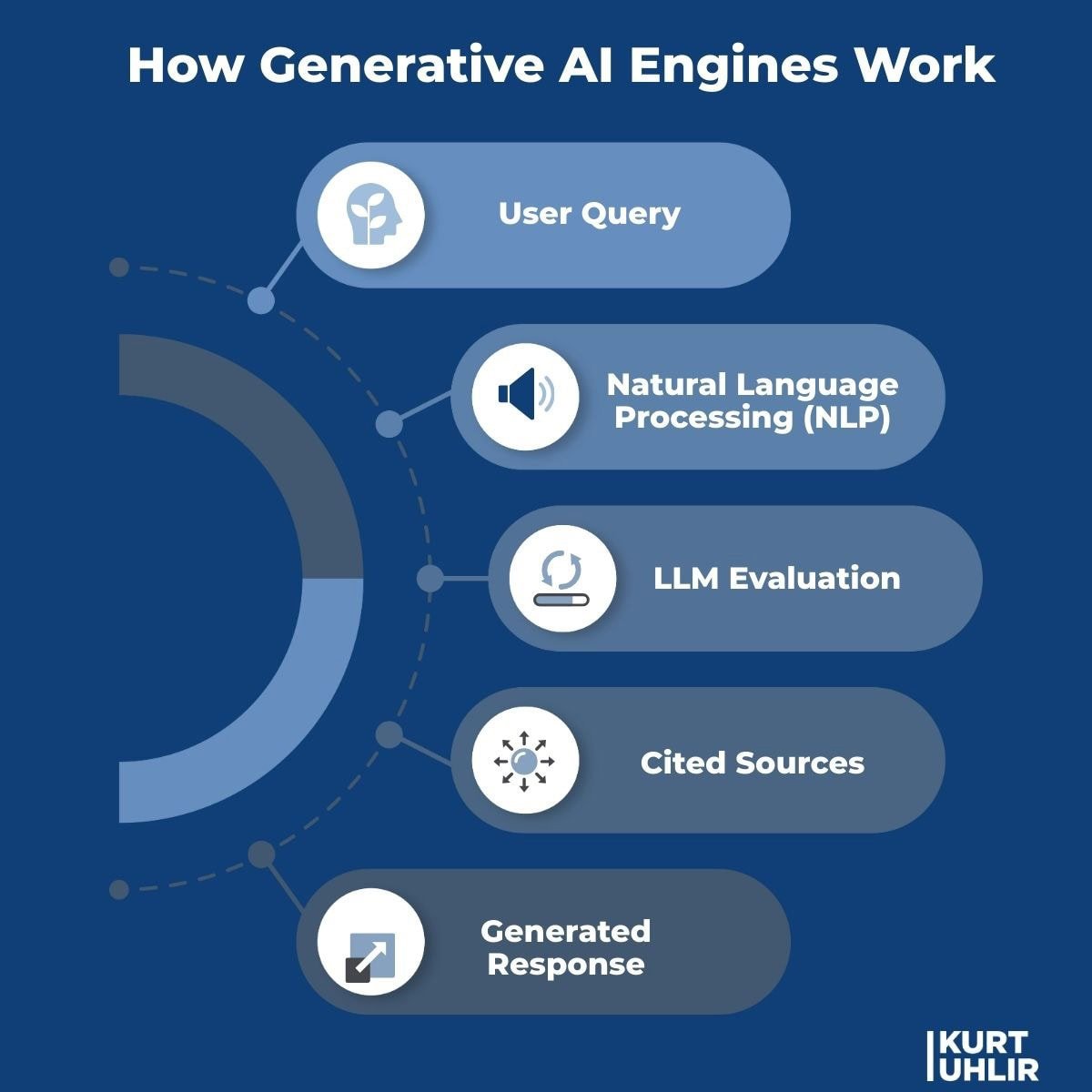
How Generative AI Engines Work
Generative AI engines use large language models (LLMs) trained on vast datasets to generate human-like responses and compile comprehensive answers. These systems employ natural language processing to interpret user queries while maintaining conversational flow, considering factors like user location and behavior to enhance response relevance.
Each generative engine has its own approach. ChatGPT prioritizes conversational interactions, while Perplexity focuses on real-time contextual relevance. Understanding these differences is key to creating content that performs well across multiple sources and platforms.
The Power of Large Language Models
LLMs are the workhorses of generative AI, producing human-like text in response to prompts. These machine learning models understand both context and relationships between words, leading to remarkably fluid content creation.
I’ve integrated over five million words of AI-optimized content at eXp Realty, proving the effectiveness of properly structured content for AI visibility. What we’re witnessing is just the beginning of how LLMs will reshape discovery across traditional search engines and AI-driven search engines.
Enabling AI Algorithms
AI engines rely on sophisticated advanced machine learning models to understand input and generate contextually relevant responses. These systems learn from patterns and connections in data, using techniques like reinforcement learning to improve based on user engagement with comprehensive responses.
For effective Generative Engine Optimization, your content must be meticulously structured with clear headings that help AI systems identify critical information. As AI technologies advance, well-organized content becomes increasingly essential for effective processing—making GEO a core component of modern digital marketing strategy.
Benefits of Generative Engine Optimization

Implementing strong Generative Engine Optimization practices leads to dramatic improvements across three key areas: content visibility, user engagement, and adaptability to evolving search behavior. My clients have seen visibility increases of up to 40% in AI-driven search results—a substantial competitive advantage for companies looking to stay ahead.
GEO optimized content resonates better with audiences, driving higher interaction rates and improved organic search metrics. Companies that embrace these practices are better positioned to weather shifts in search behavior by consistently delivering relevant, responsive content.
Enhanced Content Visibility
GEO-optimized content consistently achieves 30-40% higher visibility in AI search engines. For smaller businesses, I’ve seen increases of up to 115%. This boost comes from strategic use of structured data, schema markup, and citation-worthy content that AI engines can easily parse and reference.
Including authoritative citations, quotations, and statistics can significantly boost source visibility in AI-generated responses. Tools like Surfer SEO and Perplexity analyze content against competitors and prioritize contextual relevance, aligning perfectly with how AI systems evaluate content quality.
Site speed and crawlability remain crucial technical SEO factors—AI-driven search engines need to access and navigate your content efficiently to include it in responses.
Improved User Engagement
GEO enhances user interaction by providing user-focused content tailored to individual context, creating more satisfying experiences. This quality-focused approach increases both the likelihood of inclusion in AI-generated responses and metrics like time-on-site and lead conversion rates.
Effective distribution means leveraging social platforms, engaging in Q&A communities like Quora and Reddit, utilizing publishing platforms like Medium, and connecting through industry blogs to expand reach and deepen engagement. The data proves it—when content serves both human readers and AI algorithms effectively, user engagement metrics consistently improve.
Adaptation to Evolving Search Behavior
By 2025, voice and image-based searches will account for half of all search engine queries—a massive shift in how people find information online. GEO focuses on serving these emerging conversational search behavior patterns, prioritizing natural dialogue over keyword stuffing.
To stay ahead, frame your content as direct answers within a Q&A structure that mirrors spoken user queries. This ensures discoverability and compatibility with AI-driven search engines that utilize natural language processing. The trend clearly favors content that delivers accurate and comprehensive responses in natural speech patterns aligned with user intent.
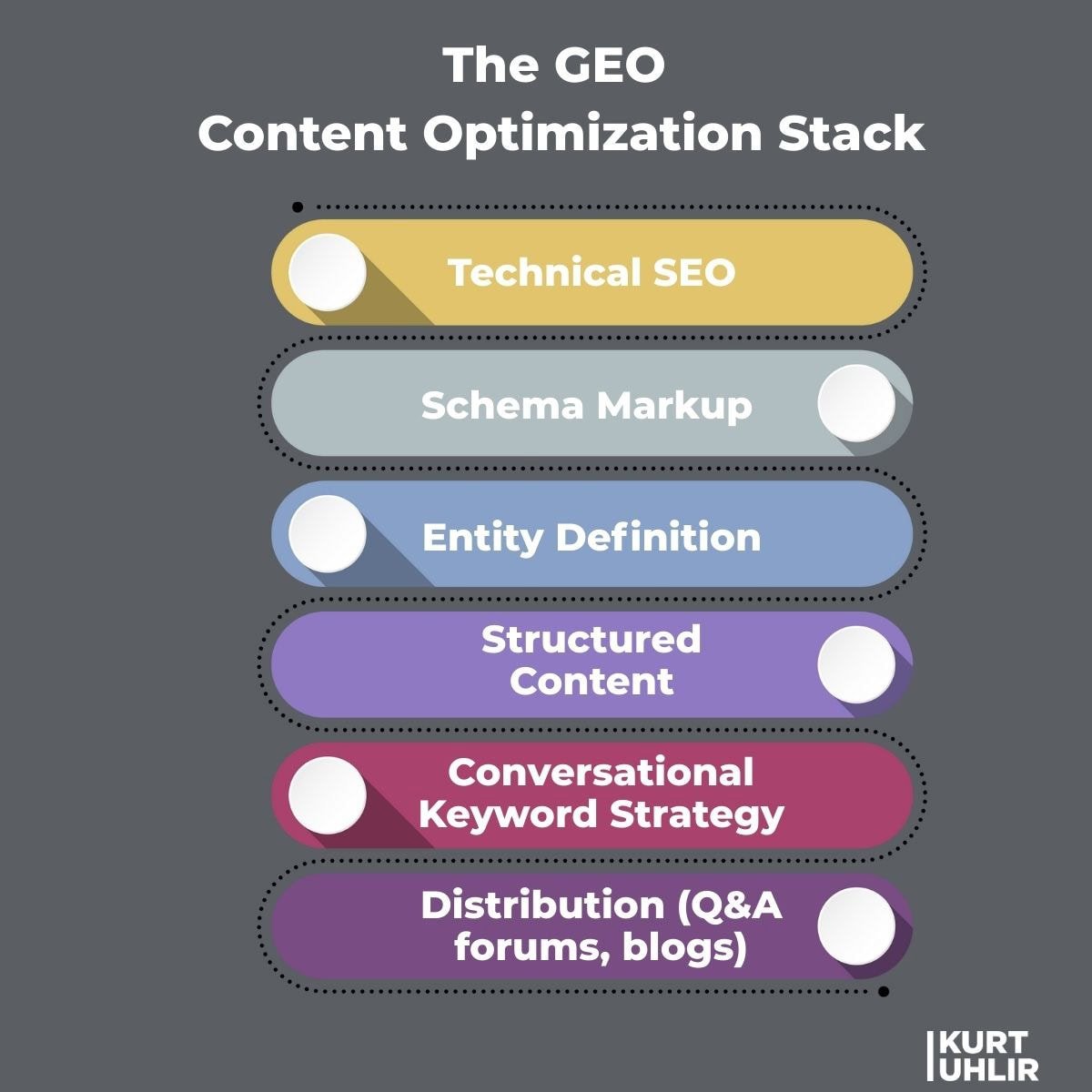
Practical Steps to Optimize Content for GEO
Implementing effective Generative Engine Optimization requires a systematic approach focused on clarity, structured content, and powerful optimization techniques. Start by conducting thorough keyword research targeting long-tail and question-oriented keywords that align with typical LLM query patterns. Create content with hierarchical headings and an authoritative tone that will perform well across both traditional search engines and AI-powered search engines.
Pay close attention to technical SEO elements like semantic HTML markup, minimizing JavaScript reliance, and ensuring proper page element loading. This helps AI engines parse and understand your content more effectively, leading to improved search results visibility and user engagement.
Begin by optimizing existing content for better alignment with AI-generated results, then gradually expand your GEO efforts using proven strategies from leading digital marketing agency practices.
Conduct Comprehensive Keyword Research
Thorough keyword research is the foundation of successful Generative Engine Optimization. Focus on long-tail and question-oriented keywords that match natural LLM user queries. Use comprehensive keyword research tools to identify and integrate relevant keywords that perform well across both traditional search engines and AI search engines.
Tailor your keyword targeting strategy to align with user intent while employing conversational language in your content. This requires shifting away from excessive keyword usage toward providing natural responses that match changing search behavior patterns. By adopting this approach, you ensure your content satisfies both users and AI-driven search engines effectively.
Create High-Quality, Structured Content
High-quality, structured content is non-negotiable for GEO success. Clear, concise language and scannable paragraphs help AI engines understand your content. Incorporate nested headings (H2, H3, H4), question formats, and authoritative voices that mirror how people actually search.
Structure your content using lists and headings to meet generative engine expectations. Tools like Grammarly can help refine your content by improving clarity, correctness, and credibility—all factors that boost engagement in AI-driven search environments. GEO optimizes content effectively when it’s built around logical information architecture with clear meta tags and content hierarchies.
Leverage Technical SEO
Technical SEO significantly impacts content visibility for AI engines. Using semantic HTML, minimizing JavaScript, and ensuring proper page element loading improves crawler performance. Keep site speed fast and optimize for mobile as these factors directly affect how well AI-driven search engines can interpret your content.
As visual search evolves, image optimization becomes increasingly important for content accessibility. Use structured data from schema.org (FAQPage, QAPage, Speakable) to enhance AI interaction with your pages and achieve better search engine results pages placement.
Properly implemented technical SEO strengthens your site infrastructure, allowing AI algorithms to effectively analyze and position your content in both traditional search engine formats and AI-generated responses.
Tools for Effective Generative Engine Optimization

Implementing strong Generative Engine Optimization practices leads to dramatic improvements across three key areas: content visibility, user engagement, and adaptability to evolving search behavior. My clients have seen visibility increases of up to 40% in AI-driven search results—a substantial competitive advantage for companies looking to stay ahead.
GEO optimized content resonates better with audiences, driving higher interaction rates and improved organic search metrics. Companies that embrace these practices are better positioned to weather shifts in search behavior by consistently delivering relevant, responsive content.
Enhanced Content Visibility
GEO-optimized content consistently achieves 30-40% higher visibility in AI search engines. For smaller businesses, I’ve seen increases of up to 115%. This boost comes from strategic use of structured data, schema markup, and citation-worthy content that AI engines can easily parse and reference.
Including authoritative citations, quotations, and statistics can significantly boost source visibility in AI-generated responses. Tools like Surfer SEO and Perplexity analyze content against competitors and prioritize contextual relevance, aligning perfectly with how AI systems evaluate content quality.
Site speed and crawlability remain crucial technical SEO factors—AI-driven search engines need to access and navigate your content efficiently to include it in responses.
Improved User Engagement
GEO enhances user interaction by providing user-focused content tailored to individual context, creating more satisfying experiences. This quality-focused approach increases both the likelihood of inclusion in AI-generated responses and metrics like time-on-site and lead conversion rates.
Effective distribution means leveraging social platforms, engaging in Q&A communities like Quora and Reddit, utilizing publishing platforms like Medium, and connecting through industry blogs to expand reach and deepen engagement. The data proves it—when content serves both human readers and AI algorithms effectively, user engagement metrics consistently improve.
Adaptation to Evolving Search Behavior
By 2025, voice and image-based searches will account for half of all search engine queries—a massive shift in how people find information online. GEO focuses on serving these emerging conversational search behavior patterns, prioritizing natural dialogue over keyword stuffing.
To stay ahead, frame your content as direct answers within a Q&A structure that mirrors spoken user queries. This ensures discoverability and compatibility with AI-driven search engines that utilize natural language processing. The trend clearly favors content that delivers accurate and comprehensive responses in natural speech patterns aligned with user intent.
Practical Steps to Optimize Content for GEO
Implementing effective Generative Engine Optimization requires a systematic approach focused on clarity, structured content, and powerful optimization techniques. Start by conducting thorough keyword research targeting long-tail and question-oriented keywords that align with typical LLM query patterns. Create content with hierarchical headings and an authoritative tone that will perform well across both traditional search engines and AI-powered search engines.
Pay close attention to technical SEO elements like semantic HTML markup, minimizing JavaScript reliance, and ensuring proper page element loading. This helps AI engines parse and understand your content more effectively, leading to improved search results visibility and user engagement.
Begin by optimizing existing content for better alignment with AI-generated results, then gradually expand your GEO efforts using proven strategies from leading digital marketing agency practices.
Conduct Comprehensive Keyword Research
Thorough keyword research is the foundation of successful Generative Engine Optimization. Focus on long-tail and question-oriented keywords that match natural LLM user queries. Use comprehensive keyword research tools to identify and integrate relevant keywords that perform well across both traditional search engines and AI search engines.
Tailor your keyword targeting strategy to align with user intent while employing conversational language in your content. This requires shifting away from excessive keyword usage toward providing natural responses that match changing search behavior patterns. By adopting this approach, you ensure your content satisfies both users and AI-driven search engines effectively.
Create High-Quality, Structured Content
High-quality, structured content is non-negotiable for GEO success. Clear, concise language and scannable paragraphs help AI engines understand your content. Incorporate nested headings (H2, H3, H4), question formats, and authoritative voices that mirror how people actually search.
Structure your content using lists and headings to meet generative engine expectations. Tools like Grammarly can help refine your content by improving clarity, correctness, and credibility—all factors that boost engagement in AI-driven search environments. GEO optimizes content effectively when it’s built around logical information architecture with clear meta tags and content hierarchies.
Leverage Technical SEO
Technical SEO significantly impacts content visibility for AI engines. Using semantic HTML, minimizing JavaScript, and ensuring proper page element loading improves crawler performance. Keep site speed fast and optimize for mobile as these factors directly affect how well AI-driven search engines can interpret your content.
As visual search evolves, image optimization becomes increasingly important for content accessibility. Use structured data from schema.org (FAQPage, QAPage, Speakable) to enhance AI interaction with your pages and achieve better search engine results pages placement.
Properly implemented technical SEO strengthens your site infrastructure, allowing AI algorithms to effectively analyze and position your content in both traditional search engine formats and AI-generated responses.
Tools for Effective Generative Engine Optimization
To maximize GEO impact, leverage sophisticated AI tools that assess semantic richness, entity coverage, and citation inclusion. Tools like JetOctopus, Frase, and HubSpot’s AI Search Grader provide critical insights for crafting content that matches user intent. In my work, I’ve confirmed that JetOctopus reveals critical patterns in LLM crawl frequency and structured page hierarchies.
While AI tools aren’t strictly necessary for generative engine optimization fine-tuning, they dramatically improve efficiency and results. Chatsonic SEO AI Agent excels at real-time trend monitoring and user intent-focused content refinement. Frase supports content creation designed to address common questions effectively. HubSpot’s AI Search Grader evaluates how brands perform in AI-generated results.
As SEO practitioners continuously adapt to new realities, these specialized AI tools become increasingly valuable for staying competitive in the generative AI landscape.
Grammarly
Grammarly serves as an essential tool for writers aiming to elevate their content to meet the strict standards expected in AI environments. It offers real-time advice on grammar, punctuation, and style choices, polishing your overall content quality.
Beyond editing, Grammarly provides text readability analysis through fluency optimization. This helps content creators adapt their work to be more accessible and engaging for audiences. Using Grammarly not only improves clarity and accuracy but makes your content more compatible with AI algorithm requirements—enhancing its reach and impact across search engines.
Surfer SEO
Surfer SEO optimizes content by aligning it with AI-driven search algorithm requirements. It combines traditional SEO techniques with generative AI insights, ensuring your content meets what AI systems look for and improving its visibility chances.
By better aligning content strategies with AI algorithm behavior using Surfer SEO, you can significantly boost organic search metrics. This leads to increased organic search traffic and website engagement. Surfer SEO leverages AI insights so your content appeals more effectively to readers while navigating the complexities of modern AI-powered ranking systems.
Perplexity
Perplexity stands out as a sophisticated AI search engine leveraging LLM capabilities to deliver immediate comprehensive answers. It prioritizes recent, relevant content—especially on contemporary, specialized topics that benefit Generative Engine Optimization GEO strategies.
By focusing on contextually relevant real-time content, Perplexity delivers accurate and comprehensive responses. This focus supports GEO’s goal of optimizing content specifically for AI-driven search engines and enhancing visibility across multiple sources.
Measuring GEO Performance
Tracking Generative Engine Optimization success is essential for refining strategies and achieving targeted outcomes. Using real-time citation tools, leveraging Google’s tracking capabilities, monitoring brand presence, and evaluating performance across multiple sources are key approaches for determining GEO efforts effectiveness.
Integrating data from multiple tools provides a comprehensive view of GEO performance. This holistic approach ensures companies have the empirical evidence needed to enhance their content creation and maintain competitive advantage in both traditional search engines and AI-powered search engines.
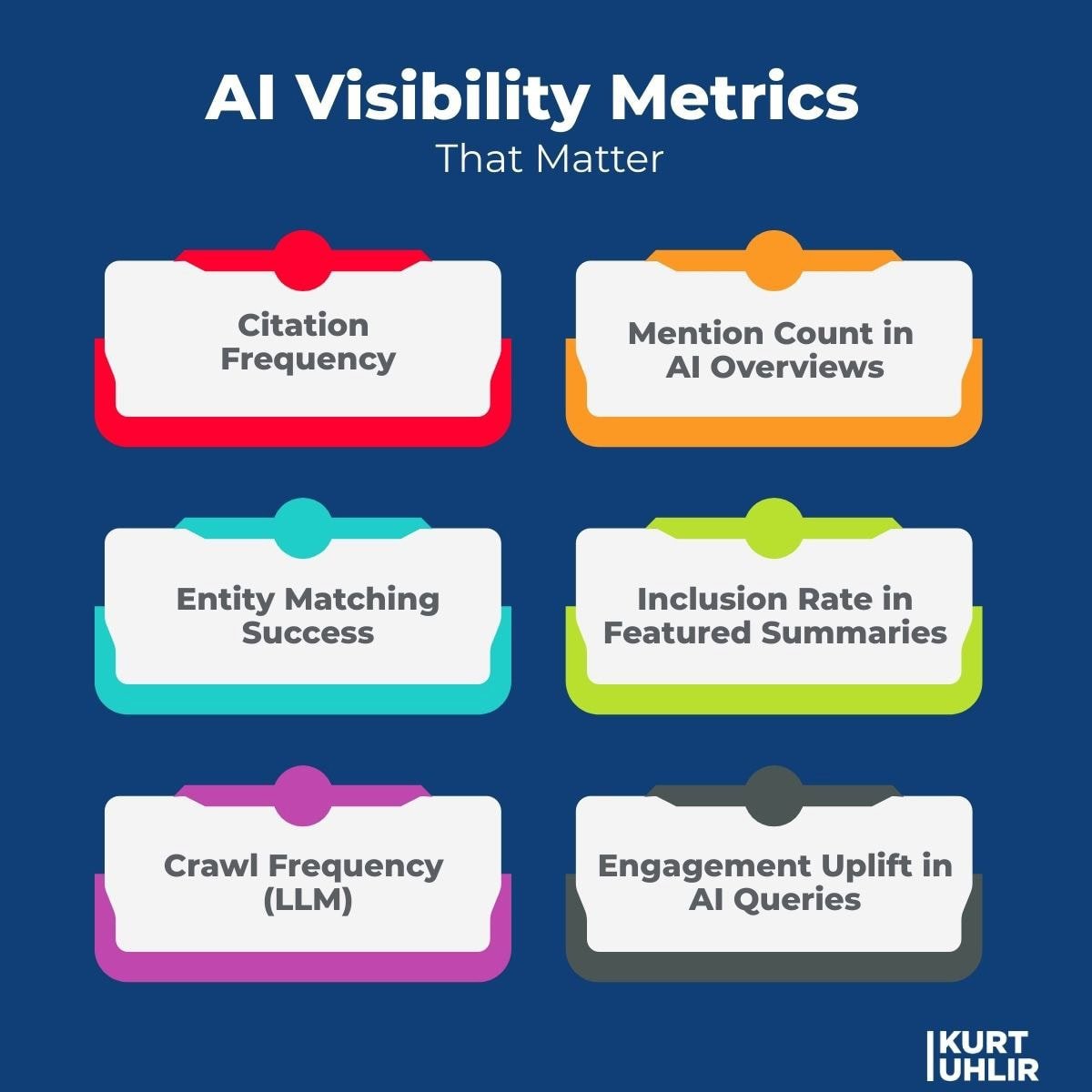
Using Real-Time Citation Tools
Real-time citation tracking tools like Perplexity and AI Search Grader are crucial for monitoring your content’s presence in AI-generated responses. Input keyword-based prompts into services like ChatGPT, Gemini, or Perplexity to check if summaries include your material.
Monitor both citation frequency and specific wording used when referencing your brand or article titles. This data helps you understand the extent and manner in which your content appears across platforms, providing critical intelligence for refining your Generative Engine Optimization strategy.
Tracking with Google Tools
GA4 allows real-time monitoring of user interactions and conversion rates for GEO-optimized content. By implementing event tagging within GA4, you can distinguish user activity on this content, crucial for accurately assessing engagement.
Analyzing conversion rates through GA4 helps evaluate the success of GEO efforts by showing how well they drive targeted behaviors. Google Search Console provides insight into keyword rankings, indexing status, and organic search traffic, offering a comprehensive view of your Generative Engine Optimization initiatives’ effectiveness.
Monitoring Brand Visibility
Tracking brand visibility is essential for measuring GEO effectiveness. Mangools SERPWatcher helps monitor your website’s performance and rankings for specific keywords on traditional search engines. It provides daily updates and includes a performance index indicating potential search volume and traffic.
AI Search Grader measures brand significance by analyzing how frequently your name or domain appears in generative engine responses. By assessing changes in perceived authority and mention frequency over time, you can refine GEO tactics to enhance search engine visibility.
Cross-Tool Performance Evaluation
For comprehensive performance understanding, assess Generative Engine Optimization strategy by integrating data from multiple sources. I enhance GEO methods refinement in both AI and traditional environments by combining citation tracking tools with log file analysis using solutions like JetOctopus or Botify.
Use Mangools SERPWatcher to monitor traditional search engine ranking positions, enabling effective comparison of SEO and GEO results. By evaluating across different tools, you ensure your strategies are optimized for performance on both AI-driven search and traditional search engines.
Common Mistakes in GEO and How to Avoid Them
Common Generative Engine Optimization mistakes include keyword stuffing, poor content quality, and improper content structure. I’ve helped businesses correct these errors by focusing on delivering high-value semantic relevance while maintaining content integrity and ensuring proper structure.
Experiment with different formats, styles, and content types to identify the most successful GEO approaches. By testing various methods, you can determine which content types are more frequently referenced by AI systems, enabling continuous improvements and refinements to your digital marketing strategy.
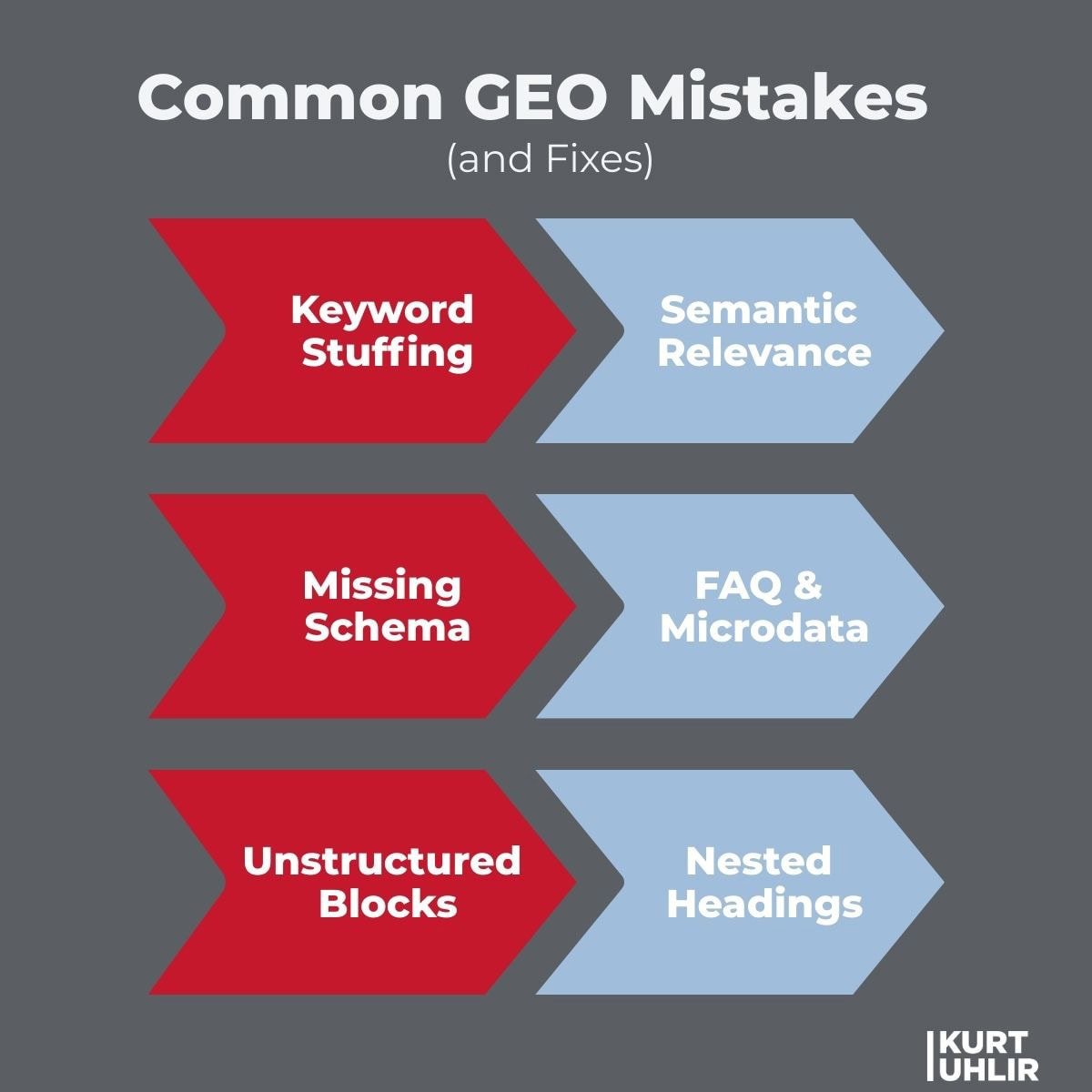
Avoiding Keyword Stuffing
Keyword stuffing—the overuse and forced insertion of keywords—harms both traditional SEO and Generative Engine Optimization performance. AI-driven search engines prefer organic content with keywords in relevant context rather than artificially saturated content.
I advocate for semantic richness instead of repetitive keyword usage, aiming to create content that engages readers while seamlessly integrating with AI-powered search engines. Incorporating keywords naturally improves content quality, making it more attractive to both users and AI engines.
Relying on SEMrush or Similar Tools
Over-reliance on SEMrush for site tracking and keyword accuracy creates problems because it doesn’t fully capture broad site tracking and isn’t always precise. I recommend combining Ahrefs for research with JetOctopus or custom AI tools to ensure comprehensive, accurate data collection.
SEMrush undervalues rankings for larger sites by 60-90%, potentially misleading team members who take these figures at face value. While Ahrefs excels at creating thematic maps, it lacks key functionalities for assessing GEO visibility. Integrating various AI tools is crucial for a comprehensive approach to optimizing content for both traditional search engines and generative AI.
Maintaining Content Quality
Content quality is non-negotiable for Generative Engine Optimization success—AI systems recognize and reference materials with depth and substance, boosting authority. I’ve built frameworks that expand high-authority content across enterprise websites while maintaining quality standards.
When content lacks substantive information, AI engines ignore it, reducing citation likelihood. By creating detailed, authoritative content, you meet AI benchmarks, improving visibility and audience engagement. GEO focuses on delivering value through quality rather than manipulating algorithms through outdated traditional SEO practices.
Ensuring Proper Content Structure
Coherent, systematic content structure is crucial for improving AI data synthesis. Implementing headings, bulleted lists, and meta tags makes content more accessible and aids AI algorithms interpretation. Many of my most frequently referenced educational articles showcase effective content organization principles.
Technical SEO elements like site speed and schema markup strengthen content framework, ensuring AI-driven search engines process and categorize it efficiently. Comprehensive keyword research aligns content with user queries and AI comprehension patterns, further enhancing structural effectiveness for both traditional search engines and generative engines.
The Future of Generative Engine Optimization
Generative Engine Optimization will become increasingly intertwined with generative AI and LLM advancements, creating a seismic shift in search dynamics that transcends traditional SEO practices. As digital marketing evolves alongside these innovative search engines, GEO adoption becomes essential for maintaining competitive edge. Small businesses that adopt early can experience visibility increases of up to 115%.
Old-school tactics like keyword stuffing will lose effectiveness as the industry pivots toward sophisticated AI-guided approaches. Aligning with GEO optimization reflects this shift toward generative engine outcomes—a crucial strategy for businesses aiming to stay ahead in an AI-dominated landscape.
Shift to Multimodal Search
By 2025, half of all searches will be conducted through voice or image queries, fundamentally changing how users interact with search engines. Generative Engine Optimization strategies must evolve to optimize content for these formats. Key tactics for maintaining prominence in multimodal searches include:
- Implementing alternative text
- Adding media captions
- Integrating structured data for audio
- Using structured formats for video content
These approaches will be crucial for maintaining visibility in multimodal search engine environments.
As platforms leverage AI algorithms to rank and condense information, advanced SEO specialists are becoming pivotal in digital marketing departments. Their expertise requires an enterprise-level approach—confirming GEO’s importance in future digital marketing strategy planning.
Real-Time Personalization
Real-time personalization is increasingly important in Generative Engine Optimization. Generative AI enables more tailored, contextually appropriate search results, improving user engagement and satisfaction within search generative experience environments. Dynamic modular content blocks revealed through LLMs responding to user profile signals will become a key approach for GEO methods.
Google emphasizes its EEAT principles for ranking purposes, underscoring the necessity for companies to produce user-focused content with considerable contextual relevance. To amplify their online footprint and maintain a competitive edge in an environment increasingly dominated by AI-driven search, businesses should incorporate visual and interactive elements into their offerings.
The Agent Experience (AX) Revolution
The evolution from User Experience (UX) to Agent Experience (AX) represents a paradigm shift in how businesses must approach digital marketing strategy. While UX focuses on human interactions, AX optimizes for AI agent engagement with your content. This new frontier requires reimagining content creation from the ground up.
I’ve helped companies transition to AX-centered approaches by focusing on structured data frameworks, clear information hierarchies, and explicit entity relationships. These elements help AI engines understand, contextualize, and accurately represent your content in AI-generated responses.
The companies winning in the AI search engines landscape are those that understand this fundamental truth: optimizing content for AI visibility requires a dual focus on both human users and AI agents. This balanced approach ensures your content performs well across all platforms—traditional search engines, AI-generated results, and emerging multimodal interfaces.
AI Visibility: The New Currency of Digital Marketing
In today’s fractured digital presence landscape, AI visibility has become the most valuable asset for forward-thinking companies. When ChatGPT, Claude, or Google’s Search Generative Experience generates responses, being cited as a primary source creates exponential brand exposure.
My enterprise clients have shifted significant portions of their content budgets toward AI visibility initiatives, recognizing that traditional search engine formats matter less than ever. The metrics that truly drive business now include:
- Citation frequency in AI-generated responses
- Brand mention rates across generative engine platforms
- Content authority scores within LLM evaluation systems
- AI retrieval rates for industry-specific user queries
Companies that master AI visibility gain a compound advantage—their content becomes more trusted by both users and AI systems, creating a virtuous cycle of increasing authority and visibility in AI-driven search engines.
Actionable GEO Implementation Plan
Ready to transform your content for the AI age? Here’s my proven implementation framework for effective Generative Engine Optimization:
- Audit Current AI Visibility: Test your content against major AI search engines to establish baseline visibility metrics.
- Content Structure Overhaul: Reorganize critical content using clear headings, lists, and knowledge panels optimized for AI algorithms parsing.
- Entity Enhancement: Identify and explicitly define key entities, relationships, and attributes within your content domain to improve AI-driven search.
- Schema Implementation: Deploy comprehensive schema markup tailored to your specific content types and business goals.
- Citation Engineering: Strategically enhance content with authoritative citations, data points, and statistically significant findings that significantly boost source visibility.
- Technical SEO: Ensure crawlability, proper rendering, and accessibility of content to AI systems and traditional search engines.
- Continuous Testing: Implement regular testing cycles across multiple sources to measure improvement and adapt GEO methods.
Companies that follow this framework consistently achieve 3-5x higher visibility in AI-generated responses within 90 days. The key is systematic implementation rather than piecemeal optimization based on outdated traditional SEO practices.
Take Action Now
The 2025 digital marketing landscape demands Generative Engine Optimization. By mastering GEO tactics, you’ll significantly boost your content visibility and user engagement while adapting to evolving search behavior patterns. Using advanced tools for thorough keyword research and consistently delivering premium content are essential practices for staying competitive in our AI-driven search world.
Early GEO adoption offers substantial advantages over companies clinging to traditional search engine formats. As AI search engines become the primary information gateways, optimizing content with generative engine principles positions your company to maintain relevance and competitiveness. Committing to Generative Engine Optimization GEO now paves the way for an enhanced digital presence and lasting business success.
Ready to transform your visibility in the AI era? Let’s connect and discuss how these strategies can work for your business.
Frequently Asked Questions
What is generative AI optimization?
Generative AI optimization focuses on creating content that engages human readers while also being favored by AI-driven search engines for better visibility and effectiveness.
It blends creative content with strategic approaches to enhance online digital presence through fluency optimization and strategic GEO methods.
What is Generative Engine Optimization (GEO)?
Generative Engine Optimization (GEO) focuses on improving content visibility specifically for AI generative engines, emphasizing how AI summarizes information rather than traditional search engine rankings.
This approach helps content creators align with generative AI systems preferences to achieve better results in AI-driven search.
How does GEO differ from traditional SEO?
GEO differs from search engine optimization by optimizing content for AI engines’ summaries through semantic clarity and trust signals, rather than primarily targeting keyword density and backlinks in traditional search engines.
This approach enhances content relevancy in our evolving digital marketing landscape across multiple sources.
Why is GEO important in an AI-driven world?
Generative Engine Optimization is essential in an AI-driven world because it ensures online visibility and relevance, especially as AI search engines become the primary information gateways for user queries.
Brands ignoring GEO efforts risk becoming invisible in search results, regardless of their traditional SEO strength.
What are the benefits of GEO?
Generative Engine Optimization significantly boosts content visibility and user engagement while adapting to changing search behavior patterns across traditional search engines and AI-powered search engines.
It builds authority in AI-driven search results, giving you a powerful competitive edge in the evolving digital marketing strategy landscape.
What are the best practices for generative engine optimization?
Best practices include creating structured, fact-rich content with clear hierarchies, using schema markup extensively, optimizing for voice search engine patterns, and ensuring technical SEO accessibility for AI-driven search engines.
Focus on building topical authority through comprehensive, well-organized content hubs that deliver accurate and comprehensive responses to user queries.
What generative engine optimization services are available?
GEO services range from AI visibility audits and structured content creation to comprehensive platform optimization and citation engineering by leading digital marketing agency providers.
Leading agencies now offer specialized Generative Engine Optimization services alongside traditional SEO, recognizing the distinct requirements of each approach in the AI search engines environment.











